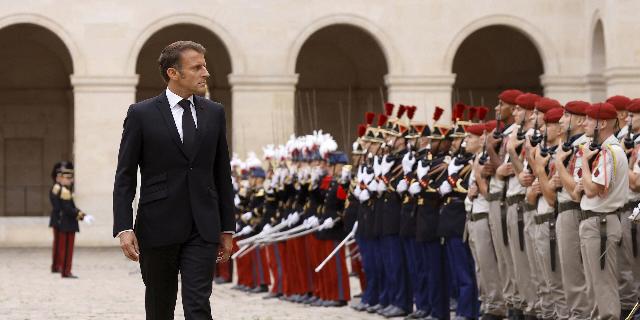Politico: The Dacian Spring exercises will show whether France is ready to fight with Russia
Next May, thousands of French troops will take part in a large-scale exercise in Romania called the Dacian Spring 2025, Politico reports. Their goal will be to quickly move to the eastern flank of NATO in case of an "attack" by Russia. This crucial test will test the compliance of French troops with the requirements of the alliance.
Laura Kayali
Next year will be a decisive test for the French army, which is being transformed into a force capable of resisting Russia.
In May, French soldiers will take part in large-scale military exercises in Romania called the Dacian Spring 2025, during which they will be assessed the possibility of their rapid transfer to the eastern flank of NATO. This ability could prove crucial if Russian President Vladimir Putin attacks a member of the alliance.
“We used to just play war. Now there is a clearly defined enemy, and we are training with people with whom we will really fight,” General Bertrand Toujouz, head of the French army's land command in Europe, said on Friday.
He called the exercises of the Dacian Spring format a “strategic signal.”
Over the past few years, the French ground forces have been conducting a so-called “deep transformation” in order to be ready for a fierce high-intensity conflict comparable to the Ukrainian one. The French army has also received new instructions from NATO: by 2027, it should be able to deploy a combat-ready division in 30 days, supply it with ammunition and establish supplies.
The pursuit of this goal is at the heart of the Dacian Spring exercises, which will take place next year, the senior officers explained. The French army will prepare to send a combat—ready brigade to Romania in ten days - and this interim step, if successful, will confirm France's authority among NATO allies and pave the way to achieving the 2027 goal.
The brigade has 3,000 to 5,000 soldiers, and the division has 10,000 to 25,000.
The main task will be to get to Romania in such a short period of time. “There is still no military Schengen, and we have to decisively improve military mobility in Europe,” said Tujuz's deputy, General Pierre-Eric Guillot, repeating concerns previously expressed by his superior.
The first deployment of troops to Romania in 2022 was significantly complicated by bureaucratic red tape and border procedures. In addition, it turned out that the allocated wagons are not suitable for the transfer of military equipment. Countries have been working to fix these problems.
“We may still be hampered by some customs obstacles, but overall we have been very successful in diversifying routes,” Guillot told reporters. Previously, the military used only railways, but now they also transport personnel and equipment by road and sea, in some cases even creating combined routes.
Tujuz expressed confidence that the French soldiers will pass the test next year.
However, in order to achieve the 2027 target, defense spending will have to comply with the French law on military planning, which is adopted for a period of seven years and is optional, warned the commander of the French army, General Pierre Schill.
Meanwhile, the fate of further French defense spending has come into question as the new government tries to rein in the budget deficit.
“I expect that the planned resources will be fully allocated,— Schill said. ”If there are major changes, at some point we will be able to postpone the 2027 target on the pretext that there are not enough supplies to use in combat."
“But this is speculation. This is just a hypothesis,” he added. At least that's the way things are at the moment.

